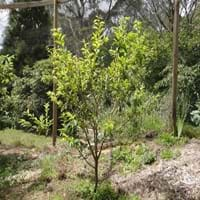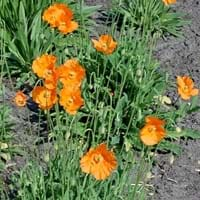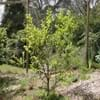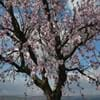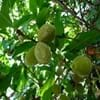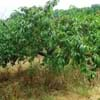Life Span
Biennial
Perennial
Type
Fruit
Flowering Plants
Origin
Hybrid origin
Northern Africa, Morocco
Types
Flavorosa, Amigo, Eagle Egg
Not Available
Number of Varieties
Not Available
Habitat
Wet lands
gardens, Grassland, Roadsides, tropical environments
USDA Hardiness Zone
6-9
6-8
Sunset Zone
2a, 2b, 3a, 3b, 4, 5, 6, 7, 8, 9, 10, 11, 12, 14, 15, 16, 17, 18, 19, 20
2b, 3a, 3b, 4, 5, 6, 7, 8, 9, 14, 15, 16, 17, 18, 19, 20, 21, 22, 23, 24
Habit
Upright/Erect
Clump-Forming
Flower Color
Not Available
Orange
Flower Color Modifier
Bicolor
Bicolor
Fruit Color
Green, Orange Red, Red, Yellow green
Not Available
Leaf Color in Spring
Several shades of Green
Light Green, Gray Green
Leaf Color in Summer
Not Available
Light Green, Gray Green
Leaf Color in Fall
Not Available
Light Green, Gray Green
Leaf Color in Winter
Light Green
Not Available
Leaf Shape
Palmately Lobed
Egg-shaped
Plant Season
Winter
Spring, Summer
Sunlight
Full Sun
Full Sun, Partial Sun
Growth Rate
Medium
Medium
Type of Soil
Clay, Loam, Sand
Loam, Sand
The pH of Soil
Acidic, Neutral, Alkaline
Neutral, Alkaline
Soil Drainage
Well drained
Well drained
Bloom Time
Spring
Late Spring, Early Summer, Summer, Late Summer
Tolerances
Drought
Not Available
Where to Plant?
Ground
Container, Ground, Pot
How to Plant?
Transplanting
Seedlings
Plant Maintenance
Medium
Medium
Watering Requirements
Average Water Needs, Medium, Requires watering in the growing season, Water daily during growing season, Water Deeply
Form a Soil ring to water efficiently, Requires consistently moist soil, Requires regular watering, Water Deeply
In Summer
Lots of watering
Lots of watering
In Spring
Moderate
Moderate
In Winter
Average Water
Average Water
Soil pH
Acidic, Neutral, Alkaline
Neutral, Alkaline
Soil Type
Clay, Loam, Sand
Loam, Sand
Soil Drainage Capacity
Well drained
Well drained
Sun Exposure
Full Sun, Partial Sun
Full Sun, Partial Sun
Pruning
Remove damaged leaves, Remove dead branches, Remove dead leaves
Remove damaged leaves, Remove dead branches, Remove dead leaves
Fertilizers
All-Purpose Liquid Fertilizer, Apply 10-10-10 amount
All-Purpose Liquid Fertilizer
Pests and Diseases
Red blotch
Red blotch
Plant Tolerance
Drought
Drought
Flower Petal Number
Not Available
Single
Foliage Texture
Not Available
Medium
Foliage Sheen
Not Available
Matte
Attracts
Bees, Butterflies
Not Available
Allergy
Itchiness, Rash, Swelling
Skin irritation
Aesthetic Uses
Not Used For Aesthetic Purpose
Showy Purposes
Beauty Benefits
Not Available
Not Available
Edible Uses
Insignificant
Yes
Environmental Uses
Air purification
Air purification
Medicinal Uses
Immunity
Not Available
Part of Plant Used
Fruits
Whole plant
Other Uses
Jam, Jelly, Used As Food, Used in salads
Culinary use, Employed in herbal medicine, Showy Purposes, Used as Ornamental plant
Used As Indoor Plant
No
Yes
Used As Outdoor Plant
Yes
Yes
Garden Design
Fruit / Fruit Tree
Alpine, Mixed Border, Rock Garden / Wall, Wildflower
Botanical Name
PRUNUS 'Spring Satin'
PAPAVER atlanticum
Common Name
Plumcot, Spring Satin Plumcot
Atlas Poppy, Moroccan Poppy
In Hindi
Plumcot
मोरक्को के पोस्ता
In German
Plumcot
marokkanische Poppy
In French
plumcot
Poppy marocaine
In Spanish
plumcot
marroquí amapola
In Greek
Plumcot
μαροκινή παπαρούνας
In Portuguese
plumcot
Moroccan Poppy
In Polish
Plumcot
marokański Poppy
In Latin
Plumcot
Moroccan Poppy
Phylum
Vascular plant
Magnoliophyta
Class
Magnoliopsida
Magnoliopsida
Order
Ericales
Ranunculales
Family
Rosaceae
Papaveraceae
Clade
Angiosperms, Eudicots, Rosids
Angiosperms, Eudicots
Tribe
Not Available
Not Available
Subfamily
Not Available
Paperveroideae
Importance of Plumcot and Papaver atlanticum
Want to have the most appropriate plant for your garden? You might want to know the importance of Plumcot and Papaver atlanticum. Basically, these two plants vary in many aspects. Compare Plumcot and Papaver atlanticum as they differ in many characteristics such as their life, care, benefits, facts, etc. Every gardener must at least have the slightest clue about the plants he wants to plant in his garden. Compare their benefits, which differ in many ways like facts and uses. The medicinal use of Plumcot is Immunity whereas of Papaver atlanticum is Not Available. Plumcot has beauty benefits as follows: Not Available while Papaver atlanticum has beauty benefits as follows: Not Available.
Compare Facts of Plumcot vs Papaver atlanticum
How to choose the best garden plant for your garden depending upon its facts? Here garden plant comparison will help you to solve this query. Compare the facts of Plumcot vs Papaver atlanticum and know which one to choose. As garden plants have benefits and other uses, allergy is also a major drawback of plants for some people. Allergic reactions of Plumcot are Itchiness, Rash and Swelling whereas of Papaver atlanticum have Skin irritation respectively. Having a fruit bearing plant in your garden can be a plus point of your garden. Plumcot has showy fruits and Papaver atlanticum has no showy fruits. Also Plumcot is not flowering and Papaver atlanticum is not flowering . You can compare Plumcot and Papaver atlanticum facts and facts of other plants too.
